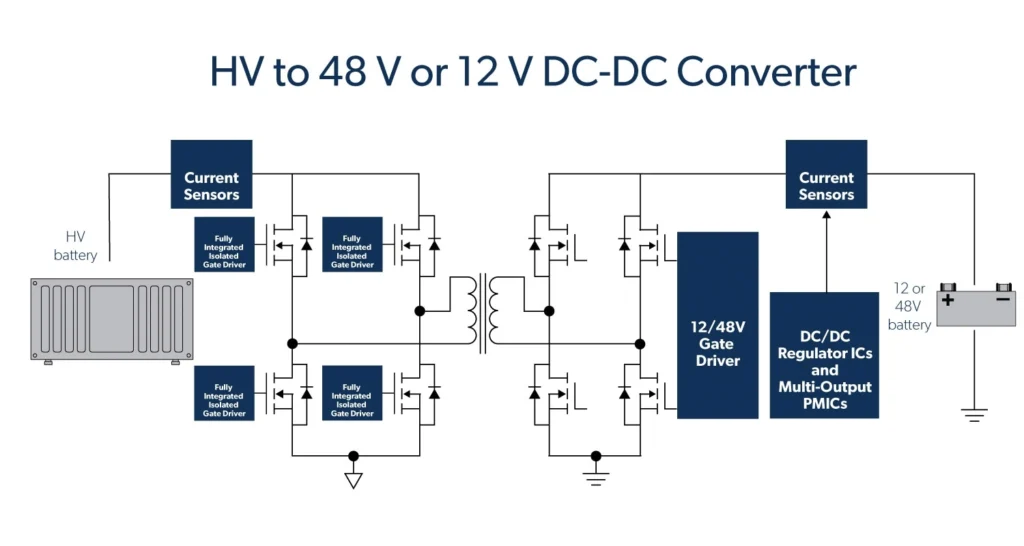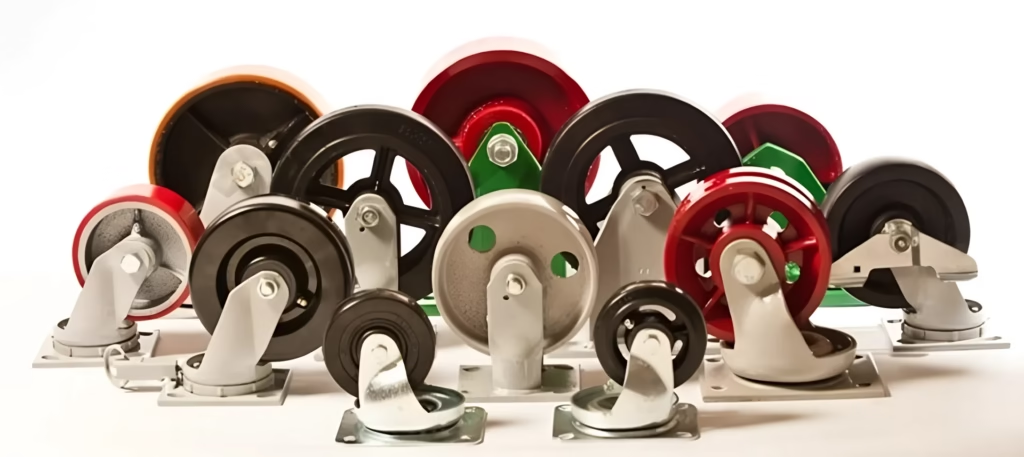In today’s increasingly complex electronic systems, isolated DC-DC converters play a critical role in ensuring safety, reducing noise, and enabling communication between circuits with different ground potentials. While many power conversion tasks — such as convert AC current to DC current — are handled at the input stage by rectifiers and AC-DC converters, DC-DC converters are essential for distributing and regulating DC power within the system, especially when isolation is required. But knowing you need isolation is only half the story — choosing the right isolated DC-DC converter for your specific application is just as important.
What Makes an Isolated DC-DC Converter Different?
Unlike non-isolated converters, isolated DC-DC converters physically separate the input and output circuits using a transformer. This separation allows power transfer without a direct electrical connection, providing:
Safety isolation protecting low-voltage circuits from high-voltage input
Elimination of ground loops and noise coupling
Compliance with standards in medical, industrial, or telecom environments
If your system involves sensitive electronics, high-voltage buses, or multiple ground domains, an isolated converter is often mandatory.
Define Your Application Requirements
Before diving into datasheets, you must clearly understand your application needs. Start by answering these questions:
- What is the input voltage range?
- What output voltage and current are required?
- What is the maximum power budget?
- Are there regulatory isolation standards to meet (e.g., IEC 60601 for medical, UL 62368 for IT/telecom)?
- What are the thermal and space constraints?
- What is the acceptable efficiency and budget?
These answers help you filter options right away and focus on models designed for your environment.
Key Parameters to Consider When Choosing an Isolated DC-DC Converter
When specifying an isolated DC-DC converter, understanding the datasheet is only half the battle — the real value comes from knowing why each parameter matters to your system. Below is an in-depth look at the key parameters you must evaluate, with practical context for each.
Isolation Voltage and Type
This is arguably the defining feature of an isolated converter.
What it is: The maximum voltage difference the isolation barrier can withstand without breakdown, often specified for 1 minute.
Why it matters: Isolation protects sensitive low-voltage circuits from high-voltage surges, breaks ground loops, and ensures safety compliance.
Basic isolation functional: No guarantee of user protection; only intended to prevent ground loops.
Reinforced/double isolation: Required for medical, industrial, and safety-critical equipment — usually 3–5 kV.
Always select an isolation rating at least 20–50% higher than the maximum possible transient voltage your application might encounter, plus a regulatory margin if required.
Input Voltage Range
A good match here ensures robust operation under supply variations.
What it is: The range of acceptable DC input voltages the converter can operate with.
Why it matters: Many systems experience fluctuations or have multiple supply standards.
Telecom: 36–75 V (nominal 48 V)
Industrial: 18–36 V or 9–36 V (nominal 24 V or 12 V)
Battery: Wider ranges may be needed due to discharge behavior
Choose a converter with input range at least 10% wider than your supply’s expected variation. For battery-powered designs, wide-input converters mitigate deep-discharge conditions.
Output Voltage and Regulation
Delivering a stable, noise-free output is the converter’s primary job.
What it is: The nominal DC output voltage and how tightly it is regulated across load and input changes.
Why it matters: Sensitive circuits (logic ICs, sensors) need tight tolerances.
Typical outputs: 3.3 V, 5 V, 12 V, 15 V, 24 V
Regulation: Expressed as a percentage (e.g., ±1%) or in mV
Check not only nominal voltage but also line/load regulation specs and transient response. Some converters allow output trimming for fine adjustment.
Output Current and Power Rating
Ensuring sufficient capacity avoids overloading.
What it is: Maximum continuous current or power the converter can deliver at specified ambient conditions.
Why it matters: Exceeding this limit can cause overheating, shutdowns, or permanent damage.
Add a design margin of 20–30% to cover peak loads, temperature derating, and aging. For dynamic loads, check peak/transient current capability too.
Efficiency
High efficiency minimizes wasted power and heat.
What it is: Ratio of output power to input power, expressed as a percentage.
Why it matters: Every watt lost to inefficiency becomes heat that must be dissipated.
Evaluate efficiency at your actual operating point typical load, not just at full load. Pay attention to light-load efficiency if your system spends time in standby or low-power modes.
Thermal Performance
Temperature affects reliability more than most realize.
What it is: The maximum ambient/case temperature the converter can sustain, and its thermal derating curve.
Why it matters: Inadequate cooling can lead to derating (less output) or failure.
Check thermal resistance (θJA or θJC), mounting method, and whether the converter needs forced air or heatsinking in your design.
Regulatory Compliance and Certifications
Different markets and industries enforce different standards.
What it is: Independent verification that the converter meets isolation, leakage, flammability, and EMC criteria.
Why it matters: Without certifications, you can’t legally ship your product into regulated markets.
For medical devices look for IEC/EN 60601-1; for IT/telecom IEC/UL 62368-1; and for industrial, EN 60950-1 or equivalent.
Form Factor and Mechanical Fit
A perfect electrical spec means nothing if it doesn’t fit physically.
What it is: Dimensions, pinout, mounting style, and weight.
Why it matters: PCB space is always at a premium; larger modules may block airflow.
Consider industry-standard footprints (eighth-brick, quarter-brick, DIP, SIP), and verify clearance for connectors and thermal pads.
Advanced Features
Modern converters often include extras to enhance usability:
Remote On/Off pin (logic or open collector)
Output trim pins (±10% adjustment)
Parallel operation capability
Overcurrent, overvoltage, and thermal protection circuits
Don’t pay for features you won’t use — but don’t omit them if your system requires them.
Application-Specific Recommendations
Here are examples of typical application requirements and suggested isolated DC-DC converter
| Application | Isolation Level | Key Features |
| Medical equipment | >4 kV reinforced | Certified to IEC 60601, low leakage current |
| Industrial control | 1–3 kV | Robust against transients, wide input |
| Telecom/datacenter | 1.5–2 kV | High efficiency, low noise, hot-swappable |
| Automotive EVs | >2.5 kV | High temp rating, vibration resistance |
By aligning your selection with your use case, you avoid overpaying for unnecessary features or under-specifying and risking reliability issues.
Common Pitfalls to Avoid
Underestimating isolation voltage: Failing to meet safety standards can expose users to electric shock hazards.
Ignoring efficiency at light loads: Some converters drop efficiency significantly when lightly loaded — watch out for that in standby-heavy applications.
Choosing the wrong package: A mismatch in form factor or thermal needs can make integration painful or impossible.
Neglecting regulatory compliance: Certifications aren’t just paperwork — they save you time, cost, and liability later.
Conclusion
Selecting the right isolated DC-DC converter is more than picking one off the shelf. It requires understanding your application needs, evaluating critical specifications, and ensuring compliance with relevant safety and performance standards.
By taking the time to assess these factors, you can improve system reliability, efficiency, and safety — and ensure that your design is ready for production and certification.





